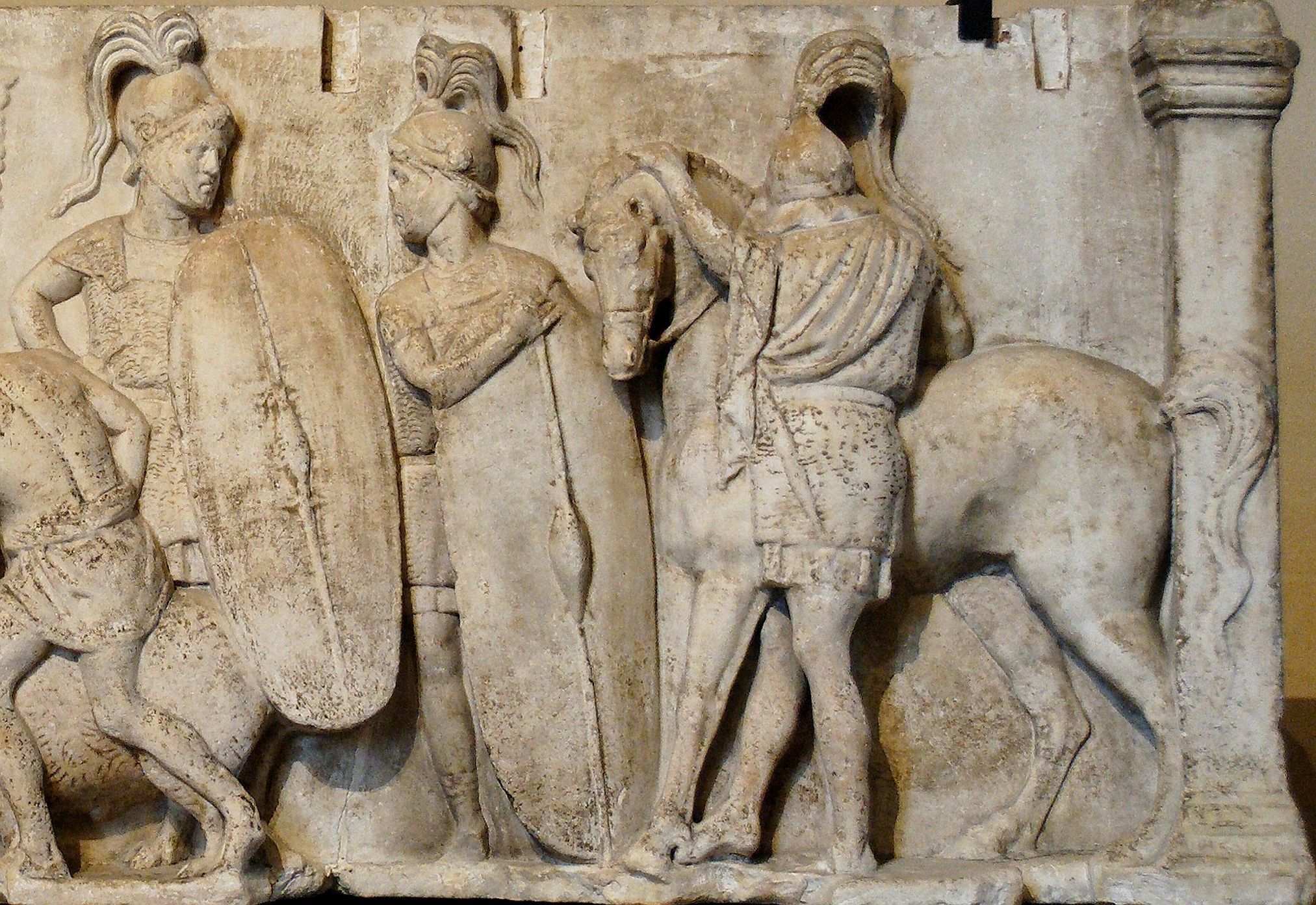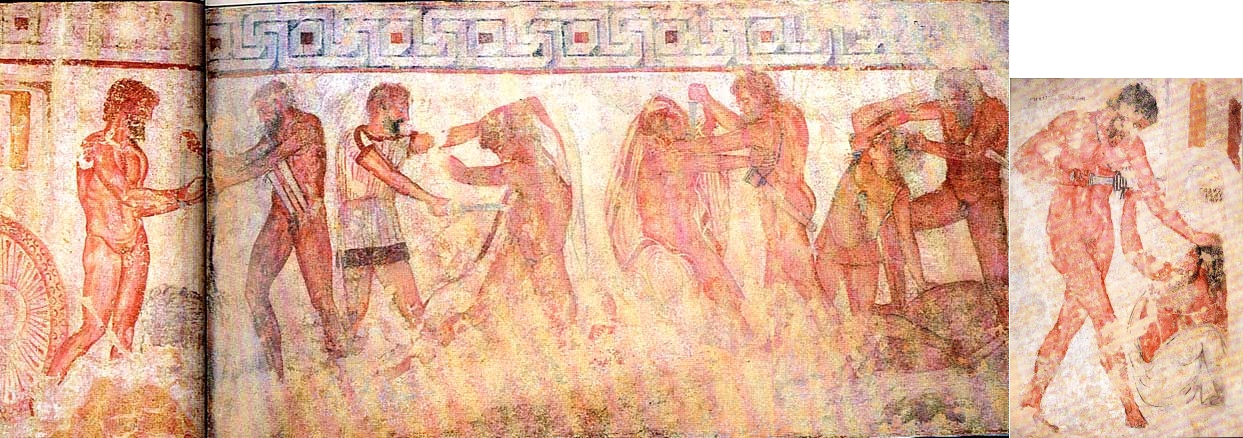|
Structural History Of The Roman Military
The structural history of the Roman military concerns the major transformations in the organization and constitution of ancient Rome's armed forces, "the most effective and long-lived military institution known to history."''Encyclopædia Britannica'', Eleventh Edition (1911), ''The Roman Army'' At the highest level of structure, the forces were split into the Roman army and the Roman navy, although these two branches were less distinct than in many modern national defense forces. Within the top levels of both army and navy, structural changes occurred as a result of both positive military reform and organic structural evolution. These changes can be divided into four distinct phases. ;Phase I: The army was derived from obligatory annual military service levied on the citizenry, as part of their duty to the state. During this period, the Roman army would wage seasonal campaigns against largely local adversaries. ;Phase II: As the extent of the territories falling under Roman ... [...More Info...] [...Related Items...] OR: [Wikipedia] [Google] [Baidu] |
Ancient Rome
In modern historiography, ancient Rome is the Roman people, Roman civilisation from the founding of Rome, founding of the Italian city of Rome in the 8th century BC to the Fall of the Western Roman Empire, collapse of the Western Roman Empire in the 5th century AD. It encompasses the Roman Kingdom (753–509 BC), the Roman Republic (50927 BC), and the Roman Empire (27 BC476 AD) until the fall of the western empire. Ancient Rome began as an Italic peoples, Italic settlement, traditionally dated to 753 BC, beside the River Tiber in the Italian peninsula. The settlement grew into the city and polity of Rome, and came to control its neighbours through a combination of treaties and military strength. It eventually controlled the Italian Peninsula, assimilating the Greece, Greek culture of southern Italy (Magna Graecia) and the Etruscans, Etruscan culture, and then became the dominant power in the Mediterranean region and parts of Europe. At its hei ... [...More Info...] [...Related Items...] OR: [Wikipedia] [Google] [Baidu] |
Servian Constitution
The Servian constitution was one of the earliest forms of military and political organization used during The Roman Republic. Most of the reforms extended voting rights to certain groups, in particular to Rome's citizen-commoners (collectively, the ''plebeians'') who were minor landholders or otherwise landless citizens hitherto disqualified from voting by ancestry, status or ethnicity, as distinguished from the hereditary ''patricians''. The reforms thus redefined the fiscal and military obligations of all Roman citizens. The constitution introduced two elements into the Roman system of government: a census of every male citizen, in order to establish his wealth, tax liabilities, military obligation, and the weight of his vote; and the '' comitia centuriata'', an assembly with electoral, legislative and judicial powers. Both institutions were foundational for Roman republicanism. The Servian constitution is traditionally attributed to the sixth king of Rome, Servius Tullius ... [...More Info...] [...Related Items...] OR: [Wikipedia] [Google] [Baidu] |
Tarquinius Superbus
Lucius Tarquinius Superbus (died 495 BC) was the legendary seventh and final king of Rome, reigning 25 years until the popular uprising that led to the establishment of the Roman Republic.Livy, '' ab urbe condita libri'', I He is commonly known as Tarquin the Proud, from his cognomen ''Superbus'' (Latin for "proud, arrogant, lofty"). Ancient accounts of the regal period mingle history and legend. Tarquin was said to have been either the son or grandson of Lucius Tarquinius Priscus, the fifth king of Rome, and to have gained the throne through the murders of both his wife and his elder brother, followed by the assassination of his predecessor, Servius Tullius. His reign has been described as a tyranny that justified the abolition of the monarchy. Background The most ancient sources, such as that of Quintus Fabius Pictor, assert Tarquin was the son of Tarquinius Priscus, but modern historians believe that to be impossible under the traditional chronology, indicating e ... [...More Info...] [...Related Items...] OR: [Wikipedia] [Google] [Baidu] |
Servius Tullius
Servius Tullius was the legendary sixth king of Rome, and the second of its Etruscan dynasty. He reigned from 578 to 535 BC. Roman and Greek sources describe his servile origins and later marriage to a daughter of Lucius Tarquinius Priscus, Rome's first Etruscan king, who was assassinated in 579 BC. The constitutional basis for his accession is unclear; he is variously described as the first Roman king to accede without election by the Senate, having gained the throne by popular and royal support; and as the first to be elected by the Senate alone, with support of the reigning queen but without recourse to a popular vote. Several traditions describe Servius' father as divine. Livy depicts Servius' mother as a captured Latin princess enslaved by the Romans; her child is chosen as Rome's future king after a ring of fire is seen around his head. The Emperor Claudius discounted such origins and described him as an originally Etruscan mercenary, named Mastarna, who fou ... [...More Info...] [...Related Items...] OR: [Wikipedia] [Google] [Baidu] |
Tarquinius Priscus
Lucius Tarquinius Priscus (), or Tarquin the Elder, was the legendary fifth king of Rome and first of its Etruscan dynasty. He reigned for thirty-eight years.Livy, '' ab urbe condita libri'', I Tarquinius expanded Roman power through military conquest and grand architectural constructions. His wife was the prophetess Tanaquil. Not much is known about the early life of Lucius Tarquinius Priscus. According to Livy, Tarquin came from Etruria. Livy claims that his original Etruscan name was , but since '' lucumo'' is the latinized form of the Etruscan word "king", there is reason to believe that his name and title have been confused in the official tradition. After inheriting his father's entire fortune, Lucius attempted to gain a political office. However, he was prohibited from obtaining political office in Tarquinii because of the ethnicity of his father, Demaratus, who came from the Greek city of Corinth. As a result, his wife Tanaquil advised him to relocate to Rome. Lege ... [...More Info...] [...Related Items...] OR: [Wikipedia] [Google] [Baidu] |
History Of Rome
The history of Rome includes the history of the city of Rome as well as the civilisation of ancient Rome. Roman history has been influential on the modern world, especially in the history of the Catholic Church, and Roman law has influenced many modern legal systems. Roman history can be divided into the following periods: *Pre-historical and early Rome, covering Rome's earliest inhabitants and the legend of its founding by Romulus *The period of Etruscan dominance and the regal period, in which, according to tradition, Romulus was the first of seven kings *The Roman Republic, which commenced in 509 BC when kings were replaced with rule by elected magistrates. The period was marked by vast expansion of Roman territory. During the 5th century BC, Rome gained regional dominance in Latium. With the Punic Wars from 264 to 146 BC, ancient Rome gained dominance over the Western Mediterranean, displacing Carthage as the dominant regional power. *The Roman Empire followed the Republi ... [...More Info...] [...Related Items...] OR: [Wikipedia] [Google] [Baidu] |
First Punic War
The First Punic War (264–241 BC) was the first of three wars fought between Rome and Carthage, the two main powers of the western Mediterranean in the early 3rd century BC. For 23 years, in the longest continuous conflict and greatest naval war of antiquity, the two powers struggled for supremacy. The war was fought primarily on the Mediterranean island of Sicily and its surrounding waters, and also in North Africa. After immense losses on both sides, the Carthaginians were defeated and Rome gained territory from Carthage. The war began in 264 BC with the Romans gaining a foothold on Sicily at Messana (modern Messina). The Romans then pressed Syracuse, the only significant independent power on the island, into allying with them and laid siege to Carthage's main base at Akragas. A large Carthaginian army attempted to lift the siege in 262 BC but was heavily defeated at the Battle of Akragas. The Romans then built a navy to challenge the Carthaginians ... [...More Info...] [...Related Items...] OR: [Wikipedia] [Google] [Baidu] |
Roman Kingdom
The Roman Kingdom, also known as the Roman monarchy and the regal period of ancient Rome, was the earliest period of Ancient Rome, Roman history when the city and its territory were King of Rome, ruled by kings. According to tradition, the Roman Kingdom began with the Founding of Rome, city's founding , with settlements around the Palatine Hill along the river Tiber in central Italy, and ended with the Overthrow of the Roman monarchy, overthrow of the kings and the establishment of the Republic . Little is certain about the kingdom's history as no records and few inscriptions from the time of the kings have survived. The accounts of this period written during the Roman Republic, Republic and the Roman Empire, Empire are thought largely to be based on oral tradition. Origin The site of the founding of the Roman Kingdom (and eventual Roman Republic, Republic and Roman Empire, Empire) included a ford (crossing), ford where one could cross the river Tiber in central Roman Italy ... [...More Info...] [...Related Items...] OR: [Wikipedia] [Google] [Baidu] |
Polybius
Polybius (; , ; ) was a Greek historian of the middle Hellenistic period. He is noted for his work , a universal history documenting the rise of Rome in the Mediterranean in the third and second centuries BC. It covered the period of 264–146 BC, recording in detail events in Italy, Iberia, Greece, Macedonia, Syria, Egypt and Africa, and documented the Punic Wars and Macedonian Wars among many others. Polybius' ''Histories'' is important not only for being the only Hellenistic historical work to survive in any substantial form, but also for its analysis of constitutional change and the mixed constitution. Polybius' discussion of the separation of powers in government, of checks and balances to limit power, and his introduction of "the people", all influenced Montesquieu's '' The Spirit of the Laws'', John Locke's '' Two Treatises of Government'', and the framers of the United States Constitution. The leading expert on Polybius for nearly a century was F. W. Walbank (1909 ... [...More Info...] [...Related Items...] OR: [Wikipedia] [Google] [Baidu] |
Peter Connolly (classical Scholar)
Peter William Connolly Society of Antiquaries of London, FSA (8 May 1935 – 2 May 2012) was a British scholar of the ancient world, Ancient Greece, Greek and Ancient Rome, Roman military equipment historian, reconstructional archaeologist and illustrator. He was a regular contributor to such periodicals as the ''Journal of Roman Military Equipment Studies'' and ''Roman Frontier Studies''. Biography Connolly studied at the Faculty of Arts and Architecture (University of Brighton), Brighton College of Arts and Crafts, and wrote his first book, ''The Roman Army'', in 1975. He also wrote and illustrated books about the ancient world, including ''Pompeii'', ''Greece and Rome at War'', ''The Greek Armies'', ''The Roman Army'', ''Colosseum: Rome's Arena of Death'', and the award-winning ''Legend of Odysseus''. He appeared regularly on television as an expert on ancient armies and their equipment, and in the 1980s presented a series for UK schools called "An Archaeological Background t ... [...More Info...] [...Related Items...] OR: [Wikipedia] [Google] [Baidu] |






